Popular on Food52
52 Comments
UK_Rabbit
December 5, 2022
G'day guys, don't forget that Pink Himalayian (Pakistani, Indian, Nepalese) salt has had TNT used to blow it up! So it is contaminated with nitroglycerine! This is NOT GOOD FOR YOU! ☠️😵☠️😵☠️
Please update your article!
Please update your article!
agrohub
October 9, 2021
If you’ve got a glowing Himalayan pink salt bulb in your bedroom or a gorgeous pink Himalayan salt cutting board from your neighborhood home goods store, pink Himalayan salt is giving you lots of benefits. Best Himalayan salt may naturally do your bifocals, whether you eat it, apply it to your skin, or use that to the bathtub.
agrohub.com.pk/himalayan-salt/
agrohub.com.pk/himalayan-salt/
Susan
February 21, 2021
I was just sitting here enjoying my covid induced enui reading through this article on salt and noticed a reference to Mark Bittman as Mark Bitterman, which if he were not such a giant in the world of food, would likely be less funny! Blaming the “ enui”!
Susan
December 16, 2023
Thank you! I reread the article and quite frankly I must have skimmed through it! I will definitely pay attention in the future!
Rob B.
December 11, 2017
What about salt from the Sahara Desert in Mali, West Africa? Is this a different crystal from an ancient sea?
Bumdadeebum D.
June 3, 2016
hey, what about "Maldon" sea salt!!
huckkam
October 19, 2018
I love Maldon! I am actually going to cover this salt in a blog post this weekend! It is one of my favorites to use to garnish delicate whipped creams, ice creams, and custards. The softness of the product really highlights the pyramid shaped crunch you get from Maldon.
julie B.
February 21, 2015
One of my new favorite salts is volcanic ....it has a slight hard boiled egg flavor and gives a nice kick to fresh raw veggies
Lance S.
July 14, 2014
What a wonderful article on salt! I first learned of alternatives to "table salt" many years ago when the Challenger disaster occurred and I vowed at the time to never use Morton salt again. (Morton is a division of the company which made the seals that directly led to the death of the Challenger astronauts.)
At that time, my search led me to pink salt, virtually the only salt on the market I was sure wasn't a part of the Morton family. Since then, my pantry has been graced by nearly a dozen other salts I keep on hand for a variety of uses. In just the past year or so I've begun experimenting with salt slabs when serving. There are few foods which the slabs don't compliment either visually or by what they may impart to that which they carry.
At that time, my search led me to pink salt, virtually the only salt on the market I was sure wasn't a part of the Morton family. Since then, my pantry has been graced by nearly a dozen other salts I keep on hand for a variety of uses. In just the past year or so I've begun experimenting with salt slabs when serving. There are few foods which the slabs don't compliment either visually or by what they may impart to that which they carry.
Elizabeth V.
May 10, 2014
I like to use Cyprus Flake salt as a finishing salt - it has large, hollow pyramid shaped crystals so it tends to sit on top of the food, and not melt away. It gives a nice crunchy salt burst. It's a pure white salt, with a fresh salty taste. The flakes are large so you need to use a light hand when salting with this one.
frenchy43
December 8, 2013
holy crap!! i was taught as a young boy to cook as Mom might not always "be around" and someone needed to know how to cook. I am now 70 and had NO idea there were that many salts. Thnx for the info. I do the cooking and my new lady does the kitchen work. There were several salts I will have to acquire.
louise.gaudet.50
November 24, 2012
Hi Laura, I enjoyed your article. I just want to mention a salt probably no one has heard of.
Kelp salt. We are a small seaweed harvesting company and one of our by product is salt from within the kelp. Pure powdery, cream colored, wonderful umami tasting salt. You can view a picture and info here: http://www.bckelp.com/KelpSaltonline.html
Kelp salt. We are a small seaweed harvesting company and one of our by product is salt from within the kelp. Pure powdery, cream colored, wonderful umami tasting salt. You can view a picture and info here: http://www.bckelp.com/KelpSaltonline.html
stevep98
May 18, 2012
Really surprised no one mentioned the hilarious Onion "Salt of the Month Club": http://latrec.deviantart.com/art/Salt-of-the-Month-Club-72116819
"A pound of artisinal salt delivered to your doorstep every month".
"A pound of artisinal salt delivered to your doorstep every month".
sandra B.
May 11, 2012
What about top-quality, Portuguese Flor de Sal? From www.savoryspiceshop.com:
Portuguese salt is noticeably whiter then the French and climate is one of the reasons why. The Algarve region of Portugal has less rain and a hotter sun than Brittany and other French regions. Another reason is the Portuguese care that is exercised in leaving the clay undisturbed at the bottom of the salt pans. No additional processing occurs from the time the salt is harvested and dried prior to being packaged for consumption. Finally this salt proudly adheres to the quality standards outlined by “Nature et Progres”, the equivalent to certified organic produce. The “Nature et Progres” seal ensures that the salt has been tested for and found free of certain contaminants. This is a top quality salt that is great as a finisher on fish, eggs, pastas, meats and more.
Portuguese salt is noticeably whiter then the French and climate is one of the reasons why. The Algarve region of Portugal has less rain and a hotter sun than Brittany and other French regions. Another reason is the Portuguese care that is exercised in leaving the clay undisturbed at the bottom of the salt pans. No additional processing occurs from the time the salt is harvested and dried prior to being packaged for consumption. Finally this salt proudly adheres to the quality standards outlined by “Nature et Progres”, the equivalent to certified organic produce. The “Nature et Progres” seal ensures that the salt has been tested for and found free of certain contaminants. This is a top quality salt that is great as a finisher on fish, eggs, pastas, meats and more.
JulieS
May 10, 2012
I have one more addition for the use of Truffle Salt. I pop my own popcorn on the stove, drizzle with EVOO and a generous sprinkle of truffle salt. Pair it with a glass of red wine and you have the perfect evening snack!
Merry
May 9, 2012
I cook with HImalayan salt all the time! I love to sprinkle it on dishes as a finishing salt and at other times I toss it in the soup PoT!
cgh
May 9, 2012
Thanks for doing a post on salt! I love special salts, and am lucky to have an assortment of salt cellars and tiny spoons passed down from my family. Santa often puts a fancy salt in my stocking, and I still have a bag of fleur de sel from my honeymoon in Paris 15 years ago.
Favorite fancy salt use: steaks and hamburgers in a cast iron pan. I mix smoked salt with kosher salt in a food processor to get the right amount of smokiness for my family, then I keep this on hand labeled "searing salt". I sprinkle the cast iron pan with my searing salt and heat it just about as hot as my stove will allow. I cook the burgers or steaks so they are rare on the inside and crusted on the outside. If possible, I move the meat to an unused part of the pan when filpping so that both sides of the meat get the salt treatment. Yum.
Favorite fancy salt use: steaks and hamburgers in a cast iron pan. I mix smoked salt with kosher salt in a food processor to get the right amount of smokiness for my family, then I keep this on hand labeled "searing salt". I sprinkle the cast iron pan with my searing salt and heat it just about as hot as my stove will allow. I cook the burgers or steaks so they are rare on the inside and crusted on the outside. If possible, I move the meat to an unused part of the pan when filpping so that both sides of the meat get the salt treatment. Yum.
Dasha18
May 9, 2012
We were in Kazakhstan in the winter of '07 adopting and found the regular bagged salt (as well as the root vegetables) much more flavorful than here.
gbatrucks
May 9, 2012
Living near the west coast of Mexico, I really enjoy the mild briney sea salt from Cuyutlan. I keep a jar of it handy that I've smoked over applewood on my "Big Chief" smoker. Cuyutlan even has a museum dedicated to the town's salt industry. See: http://sparks-mexico.com/Assorted/Cuyutlan/salt-museum/
K.N.Vinod
May 9, 2012
Nice article! Have you all tried the black salt - aka - "kala namak" ?
Though in the rock form it is black ; what is available in the market mostly is in the powdered form which is pinkish in color.
Though in the rock form it is black ; what is available in the market mostly is in the powdered form which is pinkish in color.
K.N.Vinod
May 9, 2012
Nice article! Have you all tried the black salt - aka - "kala namak" ?
Though in the rock form it is black ; what is available in the market mostly is in the powdered form which is pinkish in color.
Though in the rock form it is black ; what is available in the market mostly is in the powdered form which is pinkish in color.
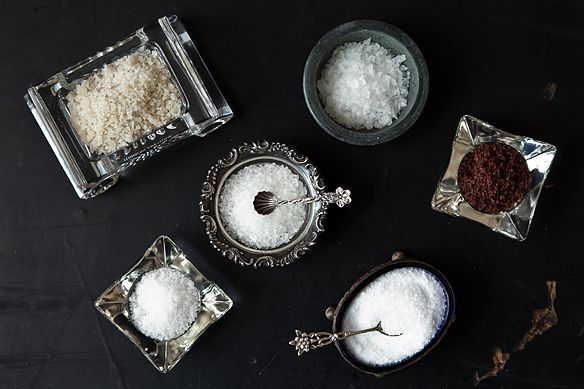
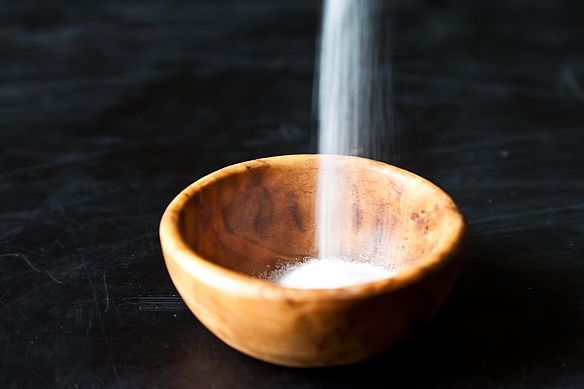
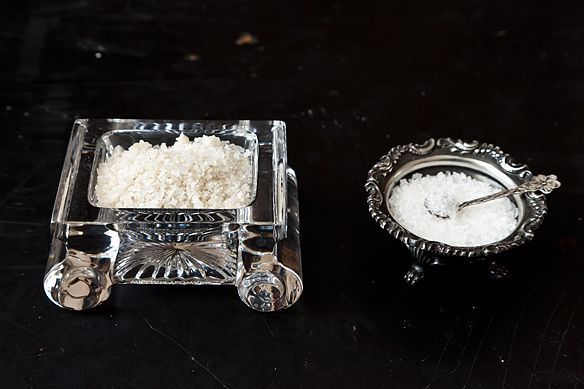
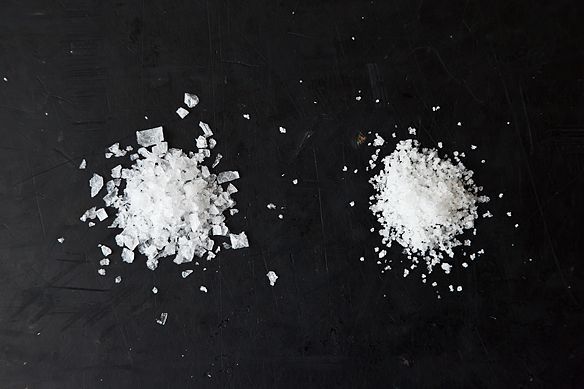

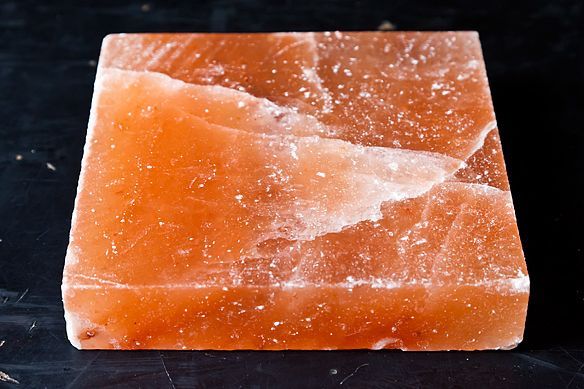

See what other Food52 readers are saying.